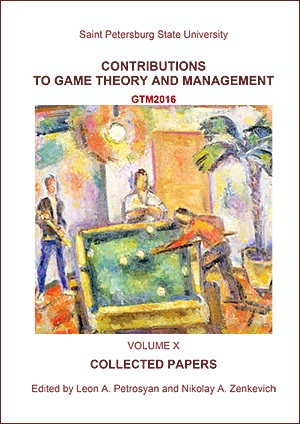Coordination in Multilevel Supply Chain
Abstract
There is a task of coordination in the multilevel supply chains with the tree-like structure taking into consideration the linearity of supply in the final markets that is discussed in this article. Three ways are suggested by authors in order to solve the chain coordination problem, i. e. to the rule of the players' strategies choice that are satisfying the certain criteria of optimality. The first way is a decentralized solution that will be issued only when all the supply chain participants act independently from each other. The second way is the optimization of the overall chain's revenue in the cooperative game, so called centralized solution. Finally, the third solution is the Nash weighted solution that is created by the optimization of the Nash weighted multiplication. Based on the particular example there is a comparison of all the ways discussed in the article.
Keywords:
Multilevel supply chains, tree-like structure, overall chains revenue, Nash weighted solution
Downloads
References
Downloads
Published
How to Cite
Issue
Section
License
Articles of "Contributions to Game Theory and Management" are open access distributed under the terms of the License Agreement with Saint Petersburg State University, which permits to the authors unrestricted distribution and self-archiving free of charge.




